Different Antique Furniture Terminology From A to Z.
Below is a list of terminology very often used in antique furniture in alphabetical order. This will be very helpful if you are interested in antiques and want to learn and understand the styles and construction. Although some of the terminology may be confusing it is helpful to read them below and then view our antique furniture for sale so you can put a picture to the different words.

Amboyna
Amboyna is a type of wood from south east Asia usually a reddish-brown in colour with a curled and mottled grain and was used for veneers in furniture.

Acanthus
An acanthus is a leafy carved ornament in the top of the columns of the Corinthian. They are found in mahogany furniture from the Georgian, Victorian and Edwardian periods.

Apron
An apron is situated below the seat rail of a chair, settee, cabinets and tables, it can be shaped like on this wonderful card table.

Alabaster
Alabaster is usually translucent and white or grey in colour, form of the mineral gypsum which can be polished to a smooth and waxy finish. Often used in sculpture, decorative stone panelling, beads and cabochons.

Arcading
Arcading is a carved architectural ornament in the shape of arches. Can be seen on chair-backs and applied on panels on coffers.
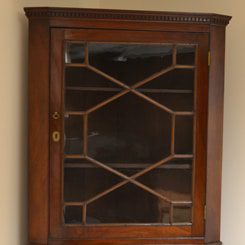
Astragal
Astragal is a small moulding used on glass for glazing bars.

Armoire
An armoire is a wardrobe, usually from France.

Ash
Ash is a figured hardwood having a variety of shades in the grain.

Baize
Baize is a lining cloth usually in card tables.
Ball-and-Claw is a talon or claw grasping a ball on the feet of some furniture.

Bamboo Turning
Bamboo turning is turned timber made to simulate bamboo, usually painted.
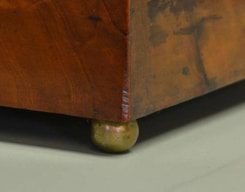
Ball Foot
A ball foot was used in the 17th century on cabinets or to the turned legs on tables.

Baluster
Baluster is a turned vase-shaped post supporting the rail of a staircase or splat of a chair.
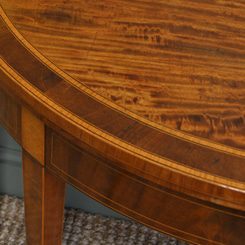
Banding
Banding is a decorative, inlaid border or edging around a piece of furniture.

Baroque
Baroque is a style of architecture, art and decoration which is bold details and sweeping curves usually gilt in decoration.

Bead
Bead or beading is a moulding resembling a string of beads.

Beech
Beech is a wood with very little grain

Bergere
Bergere is a chair with upholstered sides and usually caned or upholstered.

Birch
Birch is a hardwood with a close grain and is one of the strongest cabinet woods.

Bevel
A bevel or bevelled edge is an edge that has been cut at a slant.
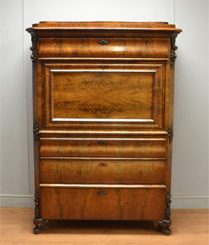
Biedermeier
Biedermier is a style of furniture produced in Austria and Germany during the Victorian period.

Bird’s eye Maple
Birds eye or birds eye maple is a decorative wood from maple and has a striking grain.

Black Forest
Black forest furniture is highly carved and is known for carved bears and other creatures of the forest, such as deer and birds.

Bolection moulding
Bolection moulding is a projecting moulding of ogee shape, raised round a panel.
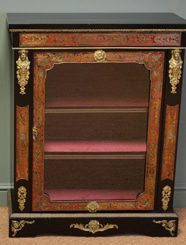
Boulle
Boulle is decorative type of marquetry which tortoiseshell, brass, copper and tin were used in elaborate floral or curving designs.

Bombe
Bombe is a French term, meaning “blown out”, describing a large outward swelling curve on the front of a piece of furniture.
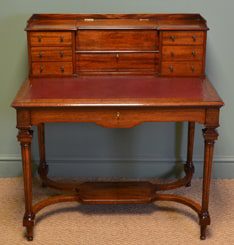
Bonheur-du-jour
A Bonheur-du-jour is a small, pretty lady’s writing desk

Bracket foot
A Bracket foot is used on chest, chest on chest or a cabinet. It is a straight corner edge and curved inner edges.
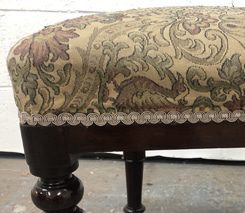
Braiding
Braiding is a finishing decoration used in upholstery around the edges of chairs.

Breakfront
A breakfront is a piece with a front of which has one or more projecting portions.

Bulb
A bulb is the bulb like part of the turned supports of furniture on tables, chairs etc. they are sometimes carved.

Burr
Burr or also known as burl is a curly-grained veneered surface cut from irregular growths of the tree, such as the roots or crotches.

Bun foot
A bun foot is a foot that resembles a slightly flattened ball or sphere.
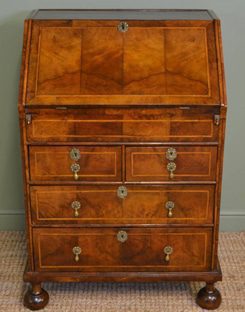
Bureau
A Bureau is a desk with a sloping fall-front. The flap is hinged above a chest of drawers.
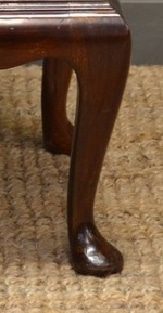
Cabriole leg
Cabriole leg is a leg with a double curve. It is stylised form an animal hind leg with elongated “S” shape; usually the foot is in the shape of a hoof, bun, paw, claw and ball or scroll feet.

Cabochon
A cabochon is in the form of a gem shape, polished and usually convex, it is usually found on the knees of chair legs.

Camel back
A camel back is a chair or sofa back and the top rail is in the form of a serpentine curve with two humps downward and three humps upward.

Candelabra
A Candelabra is a branched candlestick or lamp stand, can be found on dressing tales and some chests.

Caning
Caning is a woody stem of rattan or sugar cane used for wickerwork, seats of chairs, summer furniture, etc.
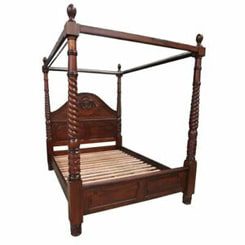
Canopy
A canopy is a draped covering of fabric suspended over a piece of furniture and supported by four posts usually on four poster beds.

Canted
A canted surface is bevelled, chamfered, or obliquely faced can be seen on the corners of chest of drawers and are called canted corners.
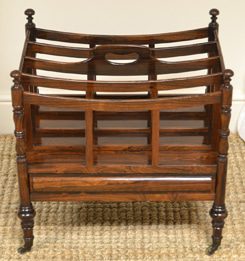
Canterbury
A Canterbury is an ornamental stand having compartments and divisions for papers, portfolios, envelopes, magazines etc.
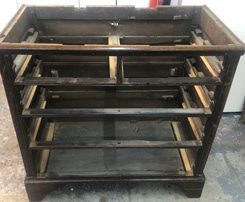
Carcase
A carcase is the term used for the body of a piece of furniture.

Carlton House Desk
The original Carlton House desk was made in the 1790s for George IV, then the Prince of Wales, living at Carlton House in London.

Cartouche
A cartouche is usually oval in shape, a cartouche is an ornamental motif with curved or scrolling edges. Often the cartouche contains a coat-of-arms, ornamental monogram or an inscription.

Caryatid
A caryatid is a decorative upright female figure used in the place of a column. In the early 18th century it can be found on chests and cupboards and quite common on some French furniture.
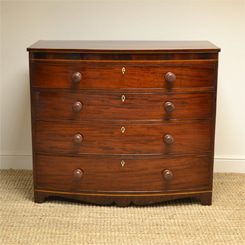
Case furniture
Case furniture is furniture which provides storage space.

Castellated
Castellated is a type of moulding in the shape of the top of a castle, usually on top of wardrobes and bookcases.

Cavetto
A cavetto is a hollowed moulding forming in profile the quadrant of a circle. A prominent cornice in large pieces of antique furniture.

Cellaret
A cellaret is a portable chest, case, or cabinet for storing bottles, decanters and glasses, dating from the 18th century. Ideal for storing wine and can be seen in some sideboard drawers.

Chaise lounge
A Chaise lounge is a long chair designed for relaxing and is upholstered.

Chamfered
A chamfered edge is bevelled or cut away from the square of the top or edge of a piece.
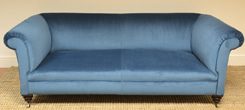
Chesterfield
A chesterfield is an overstuffed sofa of large size with upholstered ends.
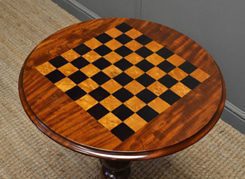
Chequer banding
Chequer banding is inlay of light and dark woods forming a pattern of squares like that of a chess or chequer boards.

Chest-on-chest
A chest on chest is a chest of drawers consisting of two parts, one on top of the other. They are also known as a tallboy.

Cheval mirror
A cheval mirror is a large full-length mirror, usually standing on the floor.

Chiffonier
A chiffonier is a small sideboard, or cabinet with cupboard or drawers below.

Claw and ball foot
Claw and ball foot is usually on the end of a cabriole leg representing an animals paw or dragons or birds claw, clutching a ball.
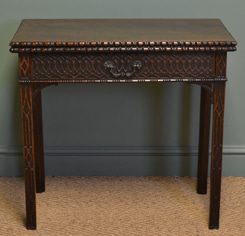
Chippendale
Thomas Chippendale 1718-1779 was one of the greatest cabinet makers of the 18th-century in England.

Club foot
Club foot is to the base of a cabriole leg but is more well known as a pad foot.

Cock beading
Cock beading is small moulding, around the edges of drawers.
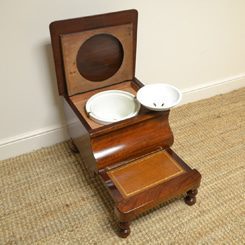
Commode
A commode is a low chest-of-drawers but later became a term for bedroom cupboards to store the porcelain potty. The commode was also used in library steps and other pieces of antique furniture.

Console table
A console table is a small table that can be attached to the wall, has two legs in front or can be free-standing against the wall.
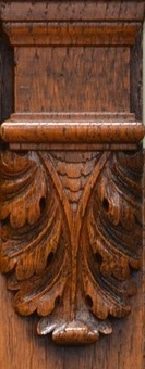
Corbel
A corbel is a bracket and can be seen on antique bookcases.

Cornice
A cornice is a horizontal moulding at the top of pieces, such as bookcases, cabinets and antique wardrobes.

Crotch veneer
Crotch veneer is a thin sheet of wood cut from the intersection of the main trunk and branch of a tree, showing an irregular patterned effect of graining. A good example is curl mahogany veneer.

Coromandel
Coromandel is a very hard wood similar to ebony and is very hard waring.
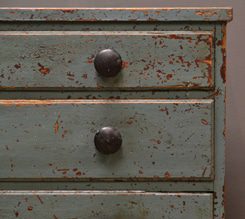
Crackle
Crackle or crackle glaze is cracks painted furniture as decoration. Crazing is another term for surface cracks in the glaze painted furniture.
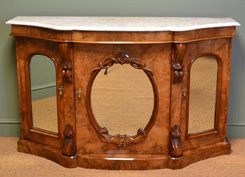
Credenza
A credenza is a sideboard and is usually very elaborate with a mirror back.

Cross banding
Cross banding is thin strips of decorative cross-grained veneer.

Crown moulding
Crown moulding is the highest moulding on a door, window, or cabinet.
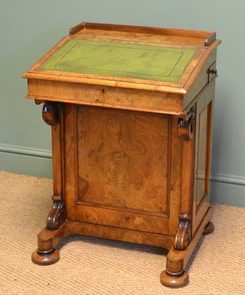
Davenport desk
An antique davenport desk is a small writing desks with usually a sloping top, brass galleries, a set of drawers on one side and false drawer fronts on the other. It is said that Gillows of London, first created the desk around 1790 for a Captain Davenport.
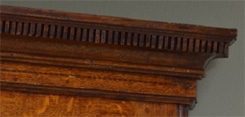 Dentil
Dentil
Dentil or dentil moulding is the moulding under the cornice consisting of a series of small rectangular shaped blocks or “teeth”.

Dovetail
Dovetail is a term in carpentry used to construct drawers, can be seen in antique chest of drawers.

Drop-leaf
A drop leaf is a leaf which is hinged to the side of a table, which drops at the side when not in use.

Dowel
A dowel is a headless pin of metal or wood which fits into a corresponding hole on another piece, forming a joint fastening them together, can be seen on table leaves.
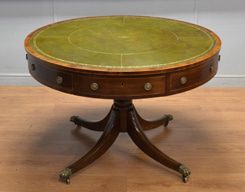
Drum table
A drum table is a round table with a deep apron resembling a drum and usually has drawers in the frieze.

Dumbwaiter
A dumb waiter is a serving table, consisting of several shelves and can also be known as a tier table.
Edwardian furniture was made during King Edward VIIs reign in Britain from 1901 to 1911

Ebony
Ebony is the name of woods that are very dark in colour, sometimes dark brown or green to black in colour.
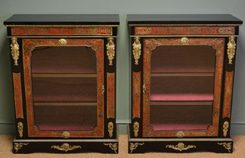
Ebonizing
Ebonizing is the staining of wood to black to simulate ebony.
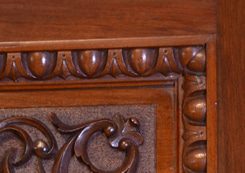
Egg-and-dart
Egg-and-dart moulding is a decorative motif consisting of egg shapes alternating with dart-like points.

Elm
Elm is a wood a light wood with very striking grain.

Embossing
Embossing is a process of stamping or hammering wood and leather so that a design protrudes beyond the surface.

Étagère
An Étagère is a free-standing cabinet or wall shelves used to display small objects, sometimes with drawers and doors.

Empire
Empire is a period of design during the reign of Napoleon 1804-14. Greek, Roman, and Egyptian motifs were widely used.
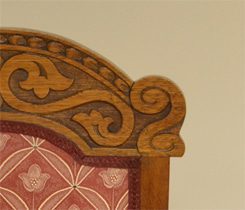
Engraving
Engraving is the process of cutting or carving lines into a wood surface.

Escutcheon
An escutcheon is a metal plate fitted around a keyhole for protection and decoration, they are usually in brass.
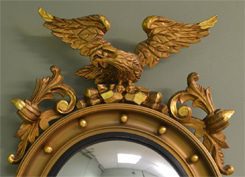
Federal
Federal is An American period 1780-1830 influenced by English styles such as Adams, Sheraton, Regency, Hepplewhite and Empire. Mahogany, pine and maple were used. The most common ornament on this period of furniture was the eagle.

Fauteuil
A Fauteuil is a French arm chair with upholstered seat and back.

Fielded panel
A Fielded panel has bevelled edges, enclosing a flat central field can be seen on antique coffers.

Finial
A finial is an ornamental knob crowning, sometimes found on stretchers on a table, chairs and stools, on cabinets and at the top of pole screens.

Flip-top
A Flip-top table is an antique dining table that tilts.

Fluting
Fluting is a decoration formed by making parallel, concave grooves usually seen on column shafts and run in a vertical direction.
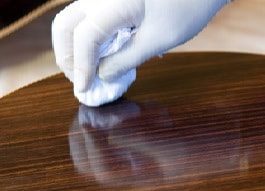
French polish
French polishing is a durable finish of high gloss created by applying lots of layers of shellac to wood. The name is used because it is believed to have been first used in France in the late 1600s.

Frieze
A Frieze is the edge below the top of a piece of furniture can be plain or sometimes carved with fretwork.

Gallery
A Gallery is an ornamental metal or wood railing around the edge of a piece of furniture.

Geometric
Geometric is a type of moulding used on 17th century Oak furniture
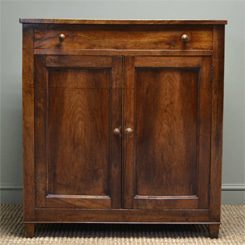
French Provincial
French Provincial is a furniture style created by craftsmen in the French provinces.
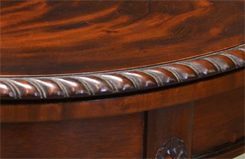
Gadrooning
Gadrooning is an applied series of small vertical, diagonal or twisted flutes commonly used as a border decoration on the edges of tables.
 Georgian
Georgian
The Georgian period is English furniture from 1714 to 1800. Among the best known designers and cabinet makers were Hepplewhite, Sheraton, Chippendale, and Adams. Mahogany and walnut were the main woods used.

Gesso
Gesso is a plaster of chalk and white lead which may be cast to make ornamental forms to be applied to wood panels, plaster surfaces etc. like the surrounds of mirrors.

Gilding
Gilding is the decoration of an object with a thin layer of gold, gold leaf or gold foil usually around mirror frames.
Gillows was Founded in 1703 by Robert Gillows, the Gillows firm operated from Lancaster, England, Gillows was especially noted for their quality and innovative designs.

Hepplewhite
Hepplewhite is an English designer from the18th century, He wrote “The Cabinet Maker and Upholsterer’s Guide”.
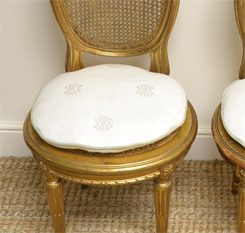
Hassock
Hassock is a tightly stuffed, upholstered cushion used as a footstool or seat.
 Herring bone
Herring bone
Herring bone or also known as feather banding is a decorative border of inlay around furniture and is different to cross banding in that two strips of veneer compose the banding and are laid at an angle of approximately 90 degrees one with the other and so forming a herringbone pattern.

Hockey Stick Beading
Hockey Stick Beading is a type of beading used on the edges of cupboard and bookcase doors overlapping the opposite door.

Horse hair
Horse hair is hair cloth, used for covering of chairs and used for upholstery filling.

Inlay
Inlay is a form of decoration used on furniture, inlay is thin layers of wood with a contrasting material is used to create a pattern.
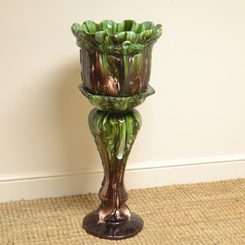
Jardinière
A Jardinière is a plant or flower container

Jacobean
Jacobean is a period in English design from 1603 to 1688, it is usually in oak and is heavy furniture.

Japanning
Japanning is a term used to imitate designs from the Far East usually painted.

Joinery
Joinery is the craft of woodwork, making furniture etc. by means of mortise and tenon, dovetail, tongue and groove, dowels, etc.

Kingwood
Kingwood is a Brazilian wood which is used in fine cabinetwork and was given its name because it was the preferred wood by the kings of France in the 18th century.

Kneehole desk
An antique kneehole desk is a desk with pedestals down either side and has a central opening for the knees of a person seated at it.
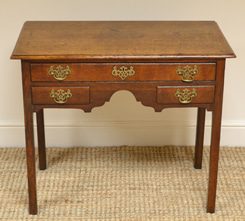
Lowboy
A Lowboy is a Chest of drawers mounted on short legs.

Lacquer
Lacquer is the oriental varnish obtained from the sap of the lacquer tree. It gives a high-gloss finish to furniture.

Liming
Liming is a finish usually seen on period oak furniture due to its grain pattern, using a white paste to fill the open wood pores, giving a distinctive look.

Linen fold
Linen fold furniture is furniture that has panels of decoration in the form of folded linen.
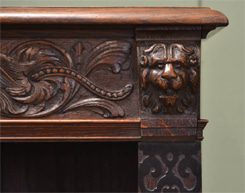
Lions Mask Carving
Lions Mask Carving is a carved ornamental feature in the form of a lion’s head.

Mahogany
Mahogany is a straight grained hard wood ranging in colour from salmon-pink through bright red.
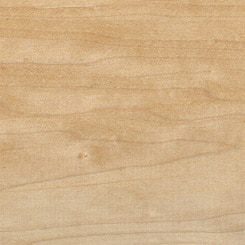
Maple
Maple is a light wood and usually golden in colour

Marquetry
Marquetry is several shaped pieces of wood used as a veneer on furniture to create decorative patterns.

Mitre joint
A mitre joint is usually used on frames, each of the edges being cut at an angle of 45 degrees and joined together.

Mother-of-pearl
Mother-of-pearl is a term used to reference the hard, iridescent inner lining of certain shells such as oyster and mussel. Used as a decorative inlay in furniture like key escutions.

Neo-classic
Neo-classic refers to the second revival of classic design for interior decoration in the 18th century.

Nest of tables
A nest of tables is a group of tables, constructed so that one fits under the other.

Oak
Oak is a hardwood which varies from light tan to deep leathery brown with a fine grain.

Occasional table
An antique occasional table is a term for small tables such as side tables, coffee tables, lamp tables etc.

Ormolu
Ormolu is French for ground gold, the term refers to brass mounts.

Ottoman
An ottoman is a low, upholstered seat without backs or arms. Sometimes used as a foot-rest and can have storage space inside.

Oyster veneering
Oyster veneering is a technique used on William and Mary furnishings; it was achieved by cutting or slicing the smaller branches of certain trees such as walnut or olive. These small, rounded veneers, with their circular striations, resembled the inside of an oyster and when pieced together produced a most dramatic effect.

Pad foot
A Pad foot is a club foot resting on an oval disc.
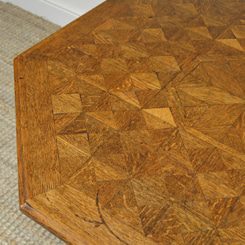
Parquetry
Parquetry is the inlay of geometric design.
 Partner’s desk
Partner’s desk
An antique partners desk is a desk large enough to seat two people facing each other with working drawers or cupboards on both sides.

Patera
Patera is a round or oval motif incorporating fluting leaves or flower petals and is usually carved or inlaid.

Patina
Patina is a term used to describe a mellow sheen formed on the surface of furniture due to wear, age, exposure, and hand-rubbing.

Pedestal
A Pedestal is a term for an upright support either turned or in the form of a cupboard.

Pediment
A Pediment is usually above a cabinet and can have scrolls.

Pembroke table
A Pembroke table is basically a drop-leaf table.

Pie-crust edge
A Pie-crust edge is usually on tables and the tops edge is carved or moulded in scallops.
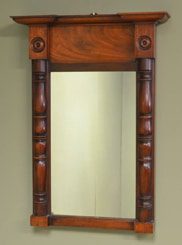
Pier glass
Pier glass is a tall, narrow framed mirror .

Pilaster
A Pilaster is an term for a flattened column for decoration rather than a structural support.
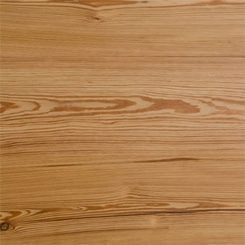
Pine
Pine is a wood that is uniform in texture with the occasional knots.
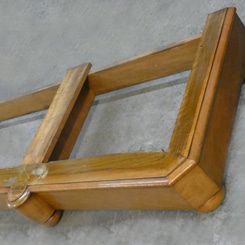
Plinth
A Plinth is the low square base of a piece of furniture.

Poplar
Poplar is an even-textured and straight-grained wood used for cross-banding.

Queen Anne
Queen Anne is a period in English furniture design from 1702-1714.

Reeding
Reeding is a term for carved tall, straight lines in a piece. Usually seen on edges of furniture.

Regency
Regency is the Period from 1810-1820 but in the trade antique regency furniture made from 1800 – 1830 is often called Regency.
 Relief
Relief
Relief is forms of moulded, carved or stamped decoration raised from the surface of a piece of furniture forming a pattern. It is a decoration that protrudes from the surface.
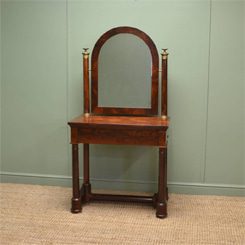
Renaissance
Renaissance is the revival of interest in classical design.

Rococo
Rococo is the period in French design but was copied by English cabinet makers.

Rosewood is a wood that is beautifully figured appearance, rosewood was a favourite among upscale cabinet makers of the 18th and 19th centuries.
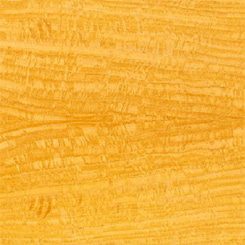
Satinwood
Satinwood is a pale wood with a silky appearance.

Salon set
A salon set is a complete set of matched seating furniture for a specific room also knows as a salon Parlour Suite.
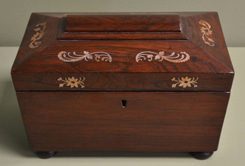
Sarcophagus
A sarcophagus is a rectangular, coffin-shaped box that has tapering sides.

Scallop shell Carving
Scallop shell carving is a semi-circular shell with ridges. This ornamental motif was common in furniture design during the Queen Anne and Georgian periods.

Scroll pediment
A Scroll pediment is a pediment and usually has a finial is placed in the centre of a cornice.

Scumble
Scumble is a type of early paint finish to look like a faux grain.

Serpentine is a term for a piece of furniture decoration shaped like an s-curve. A Serpentine curve it the winding and curving design often used in furniture legs or on the front of cabinets or desk.

Sheraton, Thomas
Sheraton Furniture is from 1750-1806, He was an English cabinetmaker who is famous for his designs. He used mahogany as his main wood; he followed the classic, simple design in the wake of Adam and Hepplewhite.

Shield back
A Shield back chair has the back in the shape of a shield which was common in Hepplewhite designs.

Sideboard
An antique sideboard is a large piece of dining-room furniture with a flat top and sometimes a back for displaying china and glass. The body is a storage unit, composed of drawers, sometimes flanked on each side by cabinets with doors.
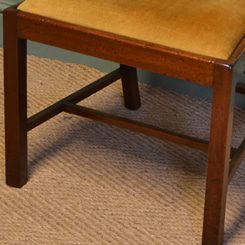
Stretcher
A Stretcher is the rail at the bottom of furniture strengthening or stabilising which often forming X, H or Y shapes.
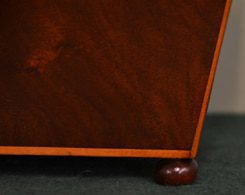
Stringing
Stringing is the term for decorative inlay in the form of fine lines.
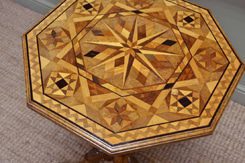
Specimen Table
A Specimen Table is a table made from lots of different veneers to show the different grains and characteristics.

Splat
A Splat is the flat central support on a chair’s back or between the seat and the top-rail.

Tea caddy
A tea caddy is a decorative small box created for storing tea leaves, many with two compartments one for black tea and the other for green tea.

Tallboy
A tallboy is a different word for an antique chest-on-chest, it is a high chest-of-drawers.

Tortoiseshell
Tortoiseshell was used as an inlay or a decorative overlay on wood surfaces.

Tapestry
Tapestry is heavy hand-woven fabric which can be found on some chair seats.

Teakwood
Teakwood is a strong, tough wood.
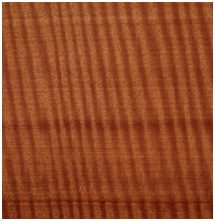
Veneering
Veneering is the fixing of thin layers of wood to the surface of a piece of furniture.

Victorian
The Victorian era is when Queen Victoria was on the throne between 1837 to 1901. Victorian furniture was constructed throughout this era and is well collected today.

Webbing
Webbing is the sack like strapping used to support upholstered seats.
This is a period when King William was on the throne in England from 1830 to 1837
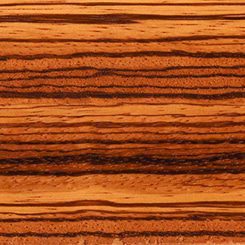
Zebrawood
Zebrawood is a wood with unusual stripes in the grain.
Hopefully this will be helpful when you have a look around at our wonderful selection of antique furniture available on our website.




